Filter by

Marine and Freshwater Toxins
This book presents the structure of the main toxins of aquatic origin, their distribution, producing species and vectors, their mechanisms of action, the clinical aspects of envenomation in humans, their effects in laboratory or wild animals, their toxicokinetic properties, including the relevant treatment, detection methods and regulatory aspects for management. The work also presents the main…
- Edition
- -
- ISBN/ISSN
- 978-94-007-6418-7
- Collation
- -
- Series Title
- -
- Call Number
- -

An Introduction to Biomechanics: Solids and Fluids, Analysis and Design
This book covers the fundamentals of biomechanics. Topics include bio solids, biofluids, stress, balance and equilibrium. Students are encouraged to contextualize principles and exercises within a “big picture” of biomechanics. This is an ideal book for undergraduate students with interests in biomedical engineering.
- Edition
- Ed. 1
- ISBN/ISSN
- 978-1-4939-2623-7
- Collation
- XXVI, 692
- Series Title
- -
- Call Number
- 660.6 HUM i

Wild Edible Vegetables of Lesser Himalayas Ethnobotanical and Nutraceutical …
Our intention with this book was to present the reader with the most accurate, significant, and up-to-date background and knowledge in the areas of ethnomedicinal and nutraceutical vegetation for the Lesser Himalayas in a comprehensive text. Wild Edible Vegetables of Lesser Himalayas provides a complete review of over 50 important plants of this region and details each species including photogr…
- Edition
- -
- ISBN/ISSN
- 978-3-319-09543-1
- Collation
- XVII, 360
- Series Title
- -
- Call Number
- -

Referent control of action and perception: Challenging conventional theories …
Empirical data on neural control of motor action and perception have not yet been put into the context of a coherent theory. Dr. Feldman's goal for the proposed book is to illustrate that the field is now at a stage where the data can be used to formulate some core principles that underlie action and perception and to present the foundation of a scientific theory of motor control. Dr. Feldman i…
- Edition
- -
- ISBN/ISSN
- 978-1-4939-2736-4
- Collation
- -
- Series Title
- -
- Call Number
- 612
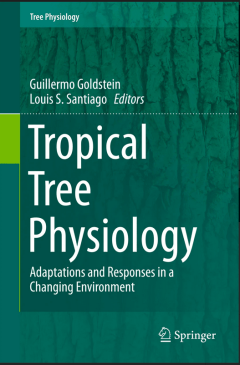
Tropical Tree Physiology
This book presents the latest information on tropical tree physiology, making it a valuable research tool for a wide variety of researchers. It is also of general interest to ecologists (e.g. Ecological Society of America; > 3000 or 4000 members at annual meeting), physiologists (e.g. American Society of Plant Biologists; > 2,000 members at annual meeting), and tropical biologists (e.g. Associa…
- Edition
- -
- ISBN/ISSN
- 978-3-319-27422-5
- Collation
- 54 b/w illustrations, 72 illustrations in colour
- Series Title
- -
- Call Number
- -
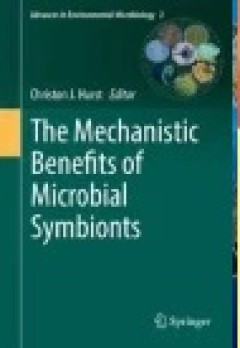
The Mechanistic Benefits of Microbial Symbionts
This volume summarizes recent advances in our understanding of the mechanisms that produce successful symbiotic partnerships involving microorganisms. It begins with a basic introduction to the nature of and mechanistic benefits derived from symbiotic associations. Taking that background knowledge as the starting point, the next sections include chapters that examine representative examples of …
- Edition
- -
- ISBN/ISSN
- 978-3-319-28068-4
- Collation
- XII, 315
- Series Title
- Advances in Environmental Microbiology
- Call Number
- -
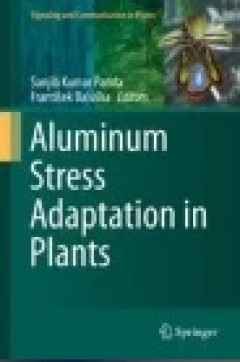
Aluminum Stress Adaptation in Plants
This book is an overview of our current understanding of aluminium toxicity and tolerance in plants. It covers all relevant aspects from molecular and cellular biology, to genetic approaches, root biology and plant physiology. The contribution of arbuscular mycorrhizal fungi to alleviating aluminium toxicity is also discussed. Over 40% of total agricultural land resources are acidic in nature, …
- Edition
- Ed. 1
- ISBN/ISSN
- 978-3-319-19968-9
- Collation
- IX, 274
- Series Title
- Signaling and Communication in Plants
- Call Number
- 630 ALU a
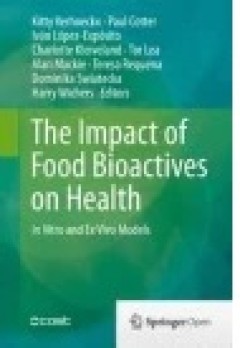
The Impact of Food Bioactives on Health
“Infogest” (Improving Health Properties of Food by Sharing our Knowledge on the Digestive Process) is an EU COST action/network in the domain of Food and Agriculture that will last for 4 years from April 4, 2011. Infogest aims at building an open international network of institutes undertaking multidisciplinary basic research on food digestion gathering scientists from different origins (fo…
- Edition
- -
- ISBN/ISSN
- 978-3-319-16104-4
- Collation
- XVII, 338
- Series Title
- -
- Call Number
- -

Membrane Potential Imaging in the Nervous System and Heart
This volume discusses membrane potential imaging in the nervous system and in the heart and modern optical recording technology. Additionally, it covers organic and genetically-encoded voltage-sensitive dyes; membrane potential imaging from individual neurons, brain slices, and brains in vivo; optical imaging of cardiac tissue and arrhythmias; bio-photonics modelling. This is an expanded and fu…
- Edition
- 1
- ISBN/ISSN
- 978-3-319-17640-6
- Collation
- XI, 516
- Series Title
- Advances in Experimental Medicine and Biology
- Call Number
- -
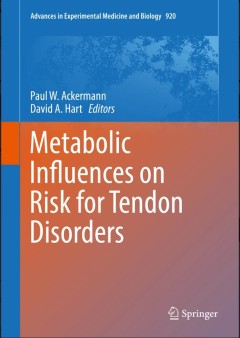
Metabolic Influences on Risk for Tendon Disorders
This book will be of considerable interest to students, practitioners (Doctors, Physiotherapists, and other health care professionals), and researchers who deal with the complex structure of tendons and the need to effectively address tendon disorders. The book is divided into three sections: (1) Basic Biology and Biochemical Markers; (2) Metabolic Disorders; and (3) Novel Therapies. The first …
- Edition
- 1
- ISBN/ISSN
- 978-3-319-33941-2
- Collation
- IX, 304
- Series Title
- Advances in Experimental Medicine and Biology
- Call Number
- -
 Computer Science, Information & General Works
Computer Science, Information & General Works  Philosophy & Psychology
Philosophy & Psychology  Religion
Religion  Social Sciences
Social Sciences  Language
Language  Pure Science
Pure Science  Applied Sciences
Applied Sciences  Art & Recreation
Art & Recreation  Literature
Literature  History & Geography
History & Geography